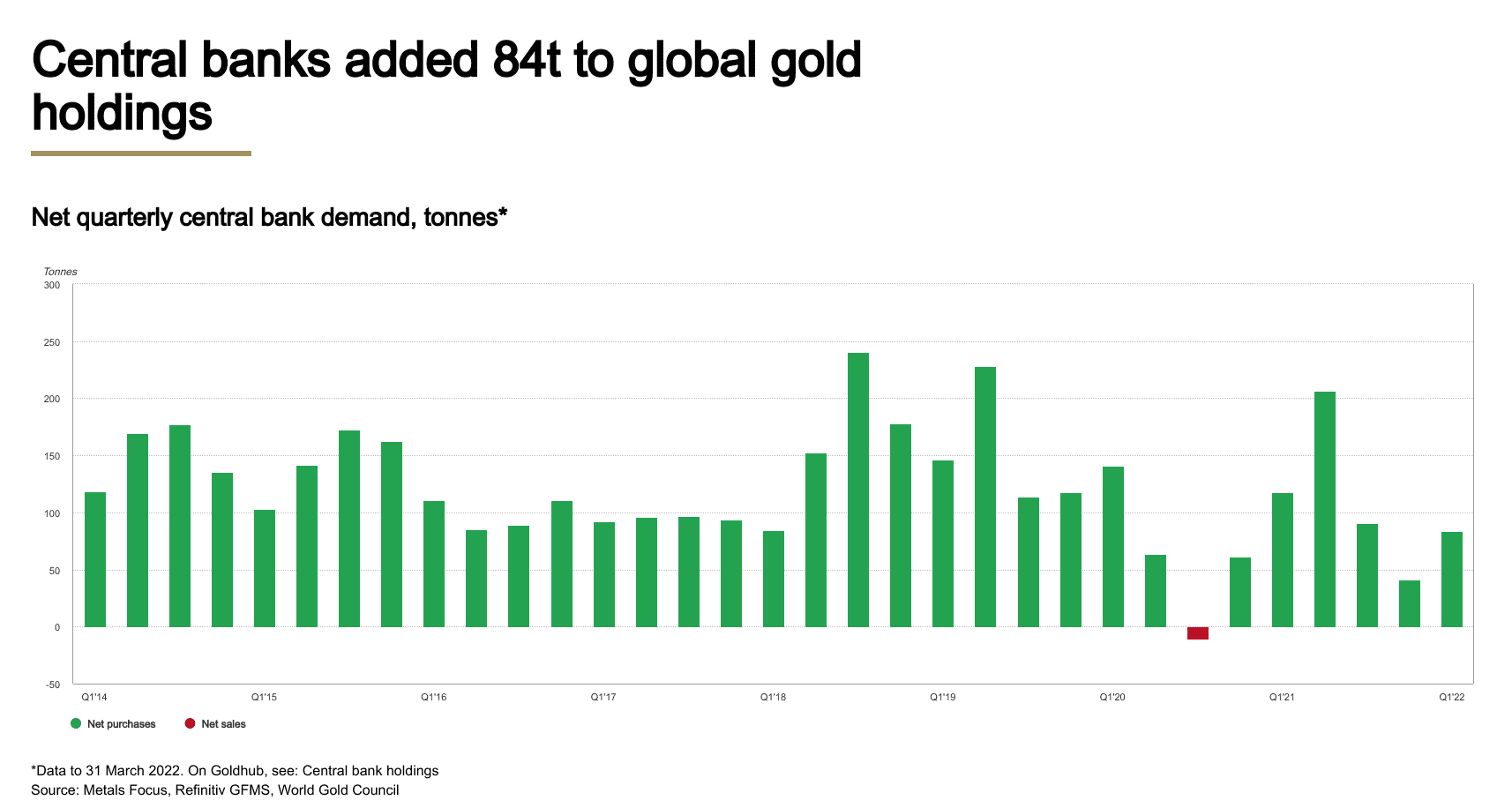Why central banks buy gold?
Central banks are major gold holders and gold plays a key role in the management of central banks’ reserves. For decades, gold has been an important component of nations’ financial reserves, and its appeal shows no signs of waning, with central banks set to be net buyers of gold once again this year. Indeed, central banks currently own over 35,000 metric tons of gold, accounting for roughly a fifth of all gold ever mined. What is it in gold, though, that has made it such a valuable asset for so long?
Central banks use gold to diversify their reserves, which is one of gold’s primary roles. The banks are in charge of their countries’ currencies, although these can be subject to swings in value depending on the underlying economy’s perceived strength or weakness.
Banks may be forced to print more money in times of need, since interest rates, the traditional lever of monetary management, have been stuck near zero for over a decade. This boost in money supply may be necessary to avoid economic turmoil, but it will come at the cost of currency depreciation. Gold, by contrast, is a finite physical commodity with a limited supply that cannot be easily replenished. As a result, it acts as a natural inflation hedge.

According to current statistics, global central bank gold reserves climbed by 19.4 tonnes in April, reverting to net purchases after net sales of 9.4 tonnes in March. Uzbekistan was the month’s largest buyer, adding 8.7 tonnes to its gold reserves. Turkey bought another 5.6 tons of gold during April, bringing its total to 5.6 tons for the year, while Kazakhstan bought 5.3 tons. Germany led the way with 0.9 million tons sold in April, followed by Mexico and the Czech Republic with 0.1 million tons each.
The fact that gold has an inverse relationship with the US dollar, another key reserve asset, adds to its attraction. Gold often rises when the dollar falls in value, enabling central banks to secure their reserves during times of market volatility.
The profile of the most active central banks has changed, with traditional economic powerhouses such as the United States, Germany, France, and Italy no longer buying more gold and instead maintaining their existing large holdings. With almost 8,100 tons of gold, the United States has nearly 78 percent of the world’s entire foreign reserves. That’s more than double Germany’s stocks of over 3,300 tons, putting it second on the list and accounting for over 74% of its reserves.
Emerging economies such as Russia, China, Turkey, and India have taken their place as gold buyers. Despite buying large amounts of gold during the previous decade or so, the four countries still lag behind their Western counterparts, with gold accounting for only 22 percent of Russia’s reserves and China’s holdings of just under 2,000 tons accounting for only 3%.
So while the origin of the central banks buying gold may have evolved over the years, the reasons for holding the gold asset have remained relatively constant.
